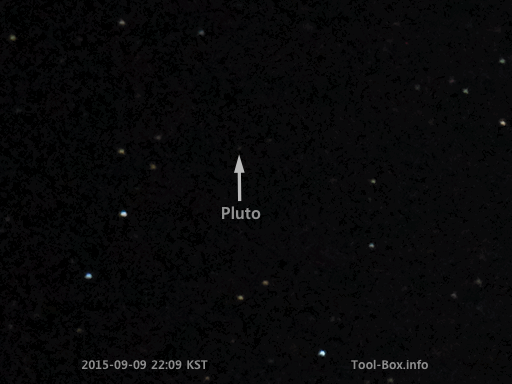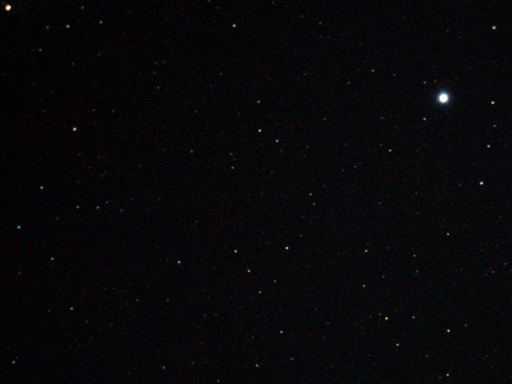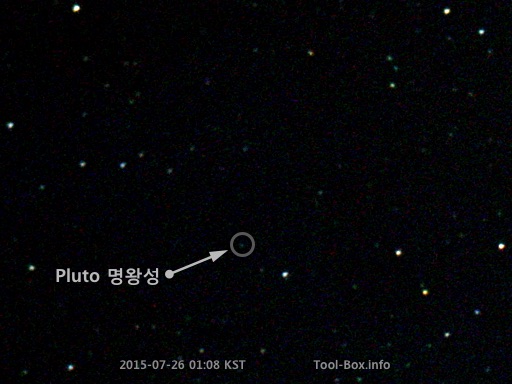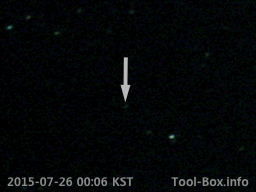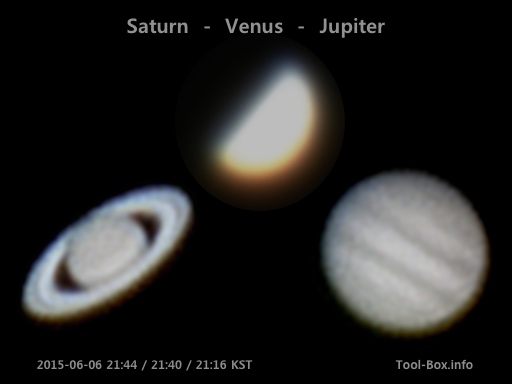A planet, a satellite, and an asteroid
Posted by Wesley on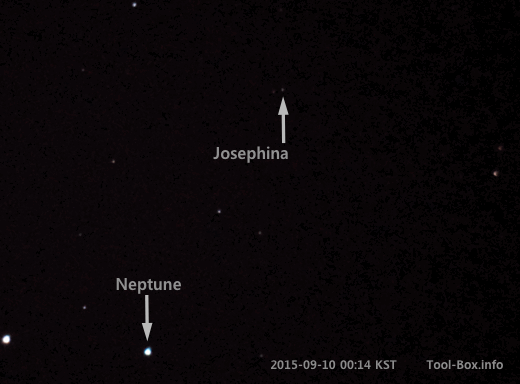
Movement of Neptune and 303 Josephina on Sept. 10, 2015 (19% size)
As Pluto moved toward the western horizon, a planet started to come into the telescope's view through the southern window - Neptune. It was the first time I had seen it in person, but seeing as how relatively dim it is compared to other planets (magnitude 7.8), I decided to take photos the same way I do for stars.
Sure enough, it was caught on the photos as a moving bright spot, next to a 6.9-magnitude star called HD 214686. But I soon discovered that it wasn't the only object moving. A faint dot of about magnitude 13 was moving considerably faster than Neptune. Given the brightness, it had to be a small but known celestial object.
Consulting the minor planet database revealed the object to be 303 Josephina, an asteroid from the main belt with a diameter of about 100km. Out of pure coincidence, I had caught a planet and an asteroid together on several photos.
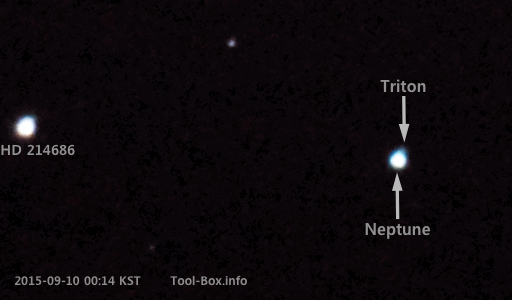
Neptune and its satellite Triton as it moves in the sky (50% size)
But the surprise didn't end there for me. I noticed that Neptune either had a bump or a small dot next to it. It turned out that it was Triton, by far the largest satellite of Neptune with apparent brightness of magnitude 13.5. Photographs taken a day apart clearly shows its changing position relative to the planet, as well. So thanks to the long exposure photography, I was able to take a planet, a satellite, and an asteroid all at once.
Here's the full version of the final frame of the animation, if you want to see it.
Telescope: Celestron NexStar 6SE
Device: Sony A5000 (prime focus)
Settings: (1500mm) - (f/10)
Filters: None
Location: Naju, Korea
#1: ISO 800 - 20s - 2015-09-10 00:14 KST
#2: ISO 800 - 20s - 2015-09-10 01:12 KST
#3: ISO 800 - 20s - 2015-09-10 02:34 KST
#4: ISO 1000 - 30s - 2015-09-10 23:28 - 23:30 KST (3 photos stacked)
#4: ISO 1000 - 30s - 2015-09-11 00:32 - 00:37 KST (2 photos stacked)
Defined tags for this entry: asteroid, astronomy, Celestron NexStar 6SE, Josephina, Neptune, planet, satellite, Sony A5000, telescope, Triton

